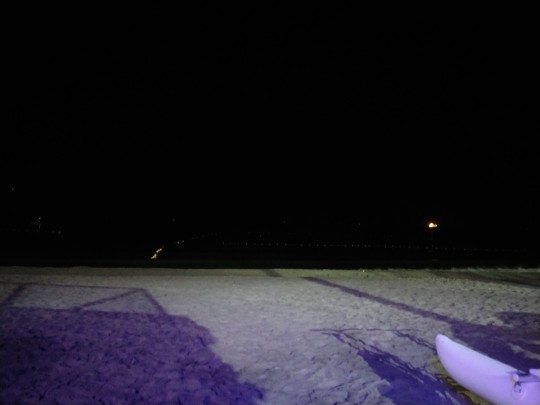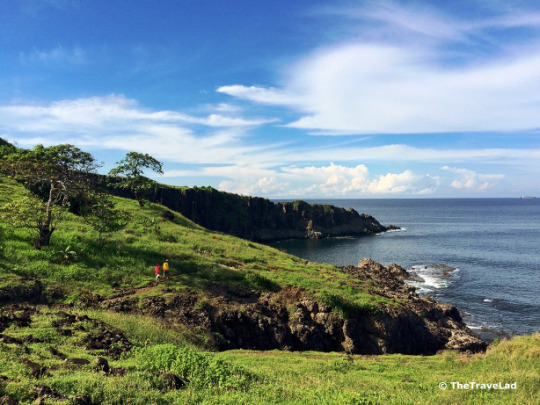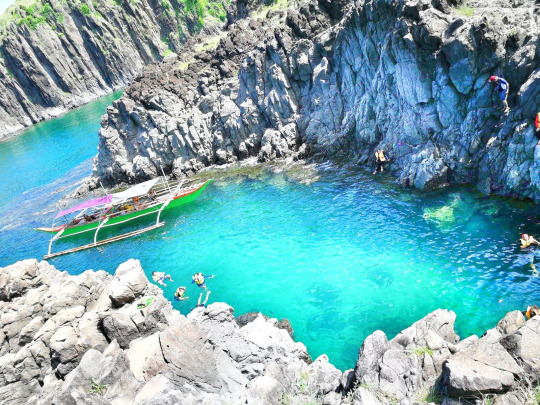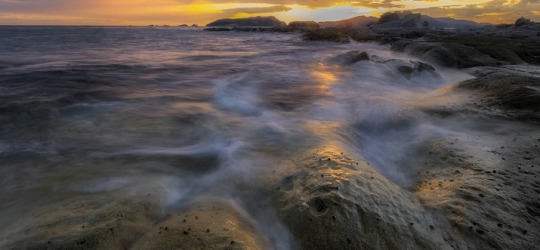#Lusong
Explore tagged Tumblr posts
Text

1600s
Drew both Piris in the 1600s, but in their much fancier wear :D Their attire is very Lusong (Tagalog + Kapampangan) since they're pretty much under Maynila's care for most of the time here though the rest of their accessories are from other provinces.
#hetalia#hws philippines#hws nyo!philippines#i have so many thoughts abt them in this time period tbh#since usually it's just timeskip from 1521 mactan to 1800s forwards lol#also nyo!piri looks tinier bc im exploring a certain scenario rn of her being born later compared to piri#maybe ill explain more someday... maybe
160 notes
·
View notes
Text



Bataan morong atm.
Inom inom lang habang naghihintay ng bukangliwayliway tapos lusong sa dagat.
Anon?
4 notes
·
View notes
Text
now that i think about. the first time i Really got into a character and actually started self shipping with them was when i was playing B&S and calling Lusung my babygirl and going "I can fix him I can fix him 😍😍" every time he started attacking people on screen I had a whole narrative in my head about it.. maybe i should dig up my reference screenshots and draw my pc and lusong
4 notes
·
View notes
Text
Yung 3 days stay ko sa coron naging 4 days. Rebook pa ghorl HAHAHAHAHAHA
Di pala kaya yung mga dive sites na ppuntahan ko in 3 days hahahah, yung 2 days alloted for:
-Barracuda Lake
-Twin Lagoon
-Skeleton shipwreck
-Reef Garden
-Smith Beach
-East Tangat Shipwreck
-Lusong Gunboat
-Lusong Coral
-Pass Island
Emeged so many divesites and dive playground 🥹💕
Excited na ko. 😭
13 notes
·
View notes
Text

my art which I finished today. I love it too much. ♡
a little about the character:
Shu-Long Lusong Shi is Cory and Haru's grandmother on their father's side.
The dragon, which is more than 700 years old, is still young, but has seen a lot.
#digital art#art#oc art#ibispaintx#ibispaint art#ibispaintdrawing#drawing#oc artwork#oc#my oc art#Spotify
5 notes
·
View notes
Text
Ulan at commute ngayong Lunes?! Jusq. Lusong sa bahahahaha na naman.
2 notes
·
View notes
Text
Travel Vlog - Pasar Souvenir Tradisional Aceh.
Dalam video ini, Anda akan kami ajak untuk menjelajahi sebuah pasar souvenir tradisional yang terletak di Desa Gurah, Kecamatan Lam Bada, Kabupaten Aceh Besar. Pasar ini penuh dengan kerajinan tangan khas Aceh yang kaya akan budaya dan tradisi Aceh. Anda bisa melihat berbagai jenis barang seperti kain tenun Aceh, Ulok, Sendok kayu, Lusong, hingga peralatan dapur buatan lokal yang semuanya…
youtube
View On WordPress
#budaya aceh#indonesia travel#pasar tradisional aceh#pesonaindonesia#sejarah#sejarah aceh#sejarah inonesoa#souvenir#souvenir aceh#tradisi aceh#travel#travel vlog#vlogs#wonderful indonesia#Youtube
1 note
·
View note
Text
currently pressure of what i’m gonna do now. di ko alam paano. di ako mapalagay sa mga nangyayari ngayon. nakakapagod!!! gusto ko lang naman magpahinga muna. huminga sabay lusong ulit. deserve ko bang ganto nalang basta hayaan? di ko naman ginusto ang takbo ng panahon para maging ganto. gusto ko lang may makapitan man lang pero wala here i am again, mag-isa. i didn’t expect anyone to help me but at least yung nandiyan man lang sana para samahan ako.
ahhhhhhhhhh 😭 i’m out of words. gusto ko lang mawala to. di ko kaya
0 notes
Text
Dead-ends
That hyphen on the word "dead-end" makes more sense and no sense, at once. Or it is just me and my dyslexic moody nothingness, yet again? This morning, dad was supposed to go on a long ride in ode of the long weekend. In an hour or so, we heard a loud sound that seemed like a firecracker, a loud one to be exact. Since I am still recovering, I asked him to check it out. He opened the door of our tiny house and looked around. Lo and behold, his three-year old bike tire exploded. We were talking about how mother dragon must have been breathing down my neck and today, my dad's neck, too. LOL. I asked him to thank mom because he could have gone wild on the roads especially during lusongs na malala. He stopped and looked at me. I knew he misses mom more and more.
I nebulized today because I can feel my breath shorten a bit which is not usual for me. Asthmatic era na ba talaga ako as an old lady with pets who shed their furs a whole lot this time of the year? LOL. I said sorry to Vici as he had to sleep on his own because mhie, I am literally and figuratively breathless-ish. Damn this bug. Ang lala but we are not stopping. Dad asked me saan ba ako pupunta this long weekend. LOL. I said that he should stop irking me because I can't afford a binat. A number of close friends are recovering from the flu for two weeks and counting; and I CANNOT imagine me in that scenario. Anyhow, I am supposed to backpack in no less than Bicolandia. However, I need to prioritize my health not only in time for the mega mad dash to the end of Q4, 2023. More importantly, the past days and weeks taught me that I am not getting any younger. Yes, I am not taking any maintenance drugs, thankfully; but it does not mean that I can go all out non-stop. LOLOLLOLLOLL. FML. I went easy on OD-ing vitamins and meds because my liver maybe crying out loud. I remember LA Tenorio's post which talks about his bout with CA. It's not just about the game but most importantly, the one who drives the ball and is part of the team. It begins and end with the self... always. This is easier said than done especially when I along with countless millennials are experiencing the pull of gravity; regardless of BMI, insulin resistance, number of zeroes in our bank accounts or the emoji reacts that our feed grants us. :D LELS.
We're all racing toward our own versions of dead-ends. We're all bound by our breath and nothing else, really. We're all but a speck of dust in the wind. It's funny how we often say that dogs' dead-ends are shorter than ours; however, I'd like to believe that all dogs have a life well-lived. They know what true love, compassion, loyalty and pure intention are. Enough said. I might be too dramatic for tonight's thought fart. I guess this is my way of resisting the AI boss bitch streak which is where I'm swimming in and will be in for the next X number of years. I guess I'd want to believe that there is a better version of Her (the movie starring Joaquin Phoenix) in this lifetime. I guess, humanity will prevail if and only if there'd be people who'll choose to make their versions of dead-ends worthwhile. Can I just say that I kinda feel like Anne Frank right now? So many social unrest, injustice towards the women and the disadvantaged. So many unnecessary factions that can actually be tackled if and only if people come together to over-communicate and negotiate. If only we work toward our dead-ends to heal the world instead of lambasting it more and more, maybe, just maybe, we'd be in a better ground. Let's see. For the meantime, I shall rest my case. Catch you in the next one!
0 notes
Photo

🚴♂️🚴♂️🚴♂️ #ahon #lusong #sarapmagbike🚲 www.instagram.com/akosiraptor (at Boy Scouts Of The Philippines, Mt. Makiling, Los Baños, Laguna) https://www.instagram.com/p/CPxBpQYH3luCZNcdkipbmzWMuHEnkkmab3xu0A0/?utm_medium=tumblr
0 notes
Video
youtube
Magbayo At Maglupak Ng Kamoteng Kahoy Sa Bukirin
#Kamote#cassava#nilupak#bukid#bukirin#mountain#alo#lusong#magbayo#bundok#busuanga#concepcion#sagrada#kiwit#tangay tv#vlogs#video#palawan#philippines#coron#wow philippines#probinsiyano#family#relatives#happiness#amazing#adventure
0 notes
Video
youtube
DIVING A WW2 JAPANESE SHIPWRECK 🇵🇭 CORON, PALAWAN (PHILIPPINES)
#youtube#palawan#coron#scuba#wreck diving#lusong gunboat#ww2#ww2 sunken ship#travel coron#scubadiving#scuba video#philippines scuba
1 note
·
View note
Text





Miss Universe Philippines Zambales 2023 National Costume: Lakapati
Lakapati, also known as Ikapati, is a pre-colonial deity worshipped by the Tagalog people of the Philippines. She is considered to be the goddess of agriculture, fertility, and harvest. Lakapati was responsible for ensuring the success of crops and the abundance of harvests. Farmers would offer pravers and sacrifices to her in the hopes of receiving a bountiful harvest. She was also believed to be the protector of farmers and their families. The costume exhibits the beauty and physique of the wearer while showcasing the elements of harvests like grains, carabao horns, and "lusong" or mortar. The color green symbolizes fertility and abundance, while the color gold represents prosperity and royalty.
#miss universe Philippines#miss Philippines#miss zambales#national costume#national costume contest#pageant
67 notes
·
View notes
Text
Posting hetalia on main r n instead of my side-blog and pondering over my bias and perspective over my pre-colonial piri and pre-colonial polities portrayals
Disclaimer: I haven't updated my knowledge on pre-colonial history for more than 2 years and neither have I refreshed my knowledge on these things so keep that in mind
I'm somewhat still a bit iffy over the whole Lusong kingdom thing. Researching kampampangan history really hasn't been in my historical hetalia checklist at all.
It can't be help since I typically use OC making as a way to reconnect with my heritage. Most of the OCs are Tagalogs, which is from my dad's side. Meanwhile I'm doing a terrible (haven't even started) job at my mom's side, which is Bikolano and Ilokano.
But anyway, I'm typically against the whole "One Big Ancient Philippines" narrative. And in a sense, foreign records on the one giant kingdom/empire/rajanate of Luçõn, May-I, or what have you, tend to fall under this except it's saying that there was "One Big Ancient Luzon".
To be fair it is where the name of the island came from. The name was based from the word Lusong, referring to how many major rivers (like the one in Pampangga I think?) drains down to Manila bay. And like the meaning of the word "you have to ride through the flow of the water" or "riding through the flow" to get there.
There was some sense of identity. But often the thing that I find dangerous with narratives like these is forgetting that sense of "Different but Together" kind of perspective when not handled properly. And it's not necessarily true per se that Tagalogs never had wars or conflicts with each other.
(There was an old forgotten saying that people from my province are gentle mannered until you really crossed them. The balisong was supposed to cut mangoes, not draw blood.)
But yeah, Portuguese explorers have met Luçong warriors when they invaded Malacca. But we need to remember that this was through their perspective and it was only one of the many lenses of different civilizations that have interacted with the archeapelago.
And I think the thing that always urks me, and this bias I have against, is being perceived as some sort of monolith. For years, most of history is thought in schools in a very Manila-centric fashion and this goes the same for talking about pre-colonial history.
I had fun back in highschool learning about Kumintang, Tondo, and Namayan and other histories not commonly thought in schools. I just wish that people would look into their own local histories because these are often ignored.
I think there's this weird misconception that emphasizing the differences of each provinces and groups would only divide people more. For me, that's far from it. Everytime I learn something new about different traditions, cultures, and histories in the country it only makes me appreciate my nation more after years of cynicism due to politics and other toxicities I have to encounter growing up here.
But anyway, this has been my ponderings. Idk, if any of these makes sense but these have been running in my mind.
#hetalia#marge's stuff#another thing#it doesn't feel right either to think of the idea of one giant luzon kingdom when people are only refering to tagalog groups#like Bikolanos are a different group as Kapampangans are different as well#Spain didn't really bothered expanding from the tagalog and kapampangan area until a century after they took over 🥴#for a certain time we were always an after thought to them#I guess there's also that#idk I'm rambling now and I'm hungry#and that's bad with my condition#rant in the tags
7 notes
·
View notes
Text
Ipinaalala sa’tin ng buwan na ‘to ang posibilidad ng pagbabago. Na maraming sorpresa ang mundo. Na hindi mapipirmi sa iisang yugto ang puso.
Sa hindi inaasahang sandali, maaari mong matagpuang bigo ang sarili. Nakasadsad. Hindi makalipad. ‘Yung akala mong pinatibay na’t pinatatag, hindi na naman makausad. ‘Yung akala mong malapit na sa tagumpay, hindi na naman alam ang gagawin sa buhay.
Sa isang iglap, bagsak na naman ang pangarap. Danas na naman ang hirap. Lusong na naman sa saklap. Nanlilimos na naman ng yakap. At ang hindi natin matanggap—paatras ang pagsalubong natin sa hinaharap.
Muling magsisimula. Muling mangangapa. Sa pinakaayaw nating pagkakataon, tatagpuin muli natin ang sarili sa pinakadulo ng pila, sa pinakaibaba, sa hulihan ng tinatakbong karera.
Sa pagtatapos nitong buwan, mapagtatanto nating biglaan lagi ang pagbabago. Wala itong pasabi, walang babala, walang abiso. Ipinaalala nitong marami tayong hindi kontrolado. Ipinaalala nito na sa kabila ng paglago, tao pa rin tayo—binubuo ng mga delubyo’t pagkabigo.
Ng pagtangis at pagtitiis; ng takot at salimuot; ng pagkadapa, ng pagluha; ng mga tanong kung susuko na ba; at mga bulong na kakayanin pa; na kahit hagupitin man tayo ng buwanang sakuna, tangan natin ang pag-asa.
Umaasa. Sana. Sa susunod na yugto, paboran naman tayo ng mundo.
—
Ron Canimo
roncanimoph
7 notes
·
View notes
Text
Byahe sa Bayan ng Mariveles!
Pinili namin ang Mariveles Bataan bilang aming destinasyon upang makapagpahinga mula sa nakakapagod na trabaho. Ang Mariveles ay isang bayan sa katimugang baybayin ng Bataan, mga tatlong oras mula sa Maynila. Ang bayang ito ay napapaligiran ng magagandang tanawin at mayaman sa kasaysayan.

Soure: thetravellad
Paano pumunta sa Mariveles?
Madaling makarating sa Mariveles mula sa Dinalupihan (kung saan kami nanggaling). Mayroon lamang isang posibleng ruta, kung saan maaari kaming maglakbay nang 01h50 nang walang trapiko sa layong 66km.
Ang aming paglalakbay sa Mariveles ay magsisimula ng 6 a.m., ng kami’y nagsimulang maghanda. Kumain ng almusal, nagbihis, at nag-impake ng aming mga gamit bago sumakay sa kotse ng 7 a.m. para bumiyahe papuntang Mariveles.

Source: viamichelin.com
Saan mag-stay sa Mariveles?
Kahit isang oras lang ang layo namin sa bahay, nagpasya kaming magpalipas ng isang gabi sa Casa Veles Hotel, na 14km ang layo sa Corregidor Island. Ang mga kuwarto ng hostel ay komportable at maluluwag, na may mga pribadong banyo. Naghahain ang hotel ng à la carte o American breakfast at may magandang serbisyo.
Noong una, binalak naming manatili sa Mariveles ng isang gabi, ngunit pagkarating namin ay napagtanto namin na mas maraming oras ang kailangan para gawin ang lahat ng gusto namin, kaya nagpasya kaming manatili ng isang gabi.
Mga bagay na maaaring gawin sa Mareveles
1. Galugarin ang Five Fingers at ang iba pang coves
Kung gusto mong tingnan ang mga alon ng Philippine West Sea na humahampas sa mga rock formation, pumunta sa Five-Fingers. Ang Five-Fingers ay binubuo ng anim na cove: Talaga, Apatol, Nagbayog, Kinalalakhan, Kutad, at Panoypoy. Ang Panoypoy ay sinusundan ng tatlong karagdagang bay sa kahabaan ng baybayin ng Mariveles, ang Talain, Lusong, at Wain, kung saan matatagpuan ang Camaya Coast. Maaaring mamasyal o sumakay ng bangka na gumagawa ng cove to cove exploration.

Source: thepinoytraveller.com
Maraming mga cafe at restaurant malapit sa lugar kung saan maaari mong subukan ang lokal na pagkain. Pumunta kami sa 28th Street Café na binubuo ng kanin na may karne at gulay. Gayundin, ang mga cafe ay isang popular na pagpipilian.

Source: sundermyfeet.com
Nagtungo kami sa Panoynoy Cove, na 20 minutong lakad lang mula Poblacion Mariveles hanggang Porto Circle sa Barangay Balon.

Source: thetravellad
Talain Cove sa Barangay Biaan, na 30 minutong paglalakbay mula sa Panoypoy Cove sa Barangay Balon

Source: thetravellad

2. Go to the Beach
Ang Mariveles, na matatagpuan sa baybayin kayat maraming mga beach at dalawa sa mga iyon ay ang Sisiman Bay at Agwawan Beach. Kabilang sa mga pasyalan ang Sisiman Beach, Sisiman View Deck, San Miguel Rock, San Miguel Lighthouse at ang Sisiman Groto.
Ang dalampasigan na ito ay ibang sa iba sa normal na tabing dagat dahil makikita mo na imbis na buhangin, mga bato ang nasa tabing dagat. Marami din ang nagbebenta ng mga keychain, inumin, at iba pa.

Source: trip101.com
View ng bay at ang San Miguel Rock sa Sisiman View Deck

Source: riley.ph

2 notes
·
View notes